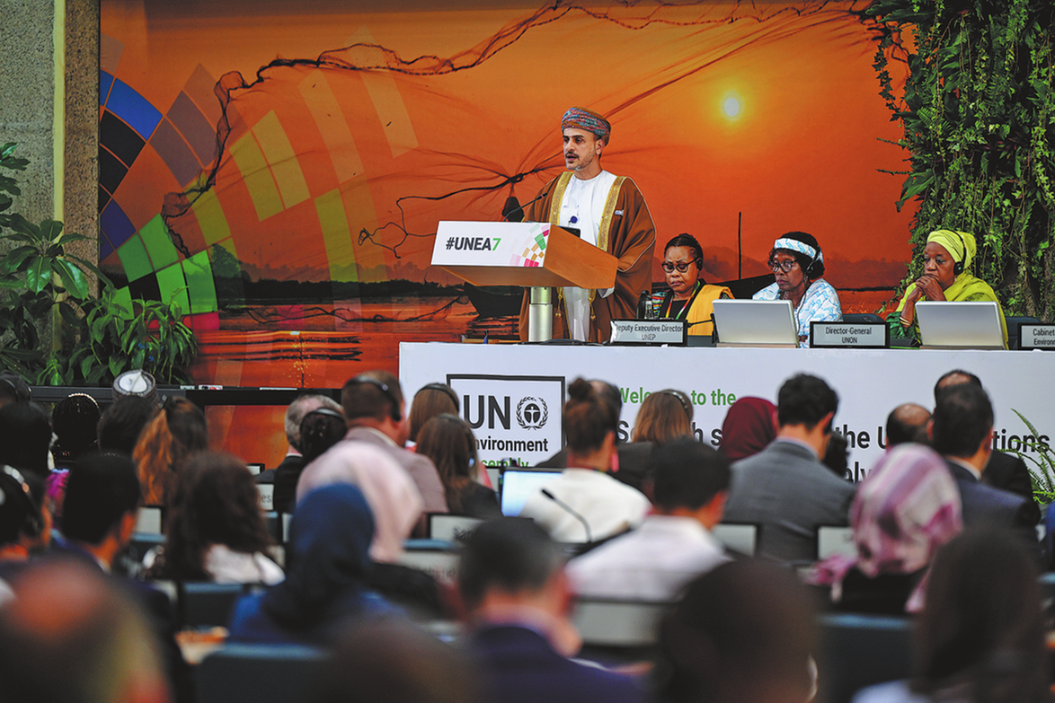Modi's India 'still outward looking' despite lockdown
By ARUNAVA DAS | China Daily Global | Updated: 2020-05-20 09:38

India is committed to globalization and contributing to the world economy even as Prime Minister Narendra Modi launches his vision of a self-reliant India capable of making world-class brands.
Finance Minister Nirmala Sitharaman made the pledge after Modi mapped out the country's road map to economic recovery on the back of a $266 billion stimulus package unveiled last week. The huge injection, a sum that translates into 10 percent of India's GDP, is designed to save an economy afflicted with coronavirus and crippled by an uninterrupted lockdown since March 25.
The country reported 4,970 new cases as of Tuesday, taking the total from the outbreak to 101,139, including 3,163 deaths.
" (Modi's vision) is not about looking inward or being isolationist …(but about a) confident India that contributes to the globe," Sitharaman said. "The crisis and the challenge is an opportunity to build a self-reliant India."
Much of the money is meant for infusing liquidity and carrying out reforms in key sectors such as infrastructure, manufacturing, aviation, agriculture, public health, education and ease of doing business.
In terms of volume, India's rescue package can measure up to those of the biggest economies in the world.
"It is India's bridge between localization and globalization," said Seshadri Chari, an ideologue of the ruling Bharatiya Janata Party, writing in The Print, an online publication.
"In the Indian context, self-reliance should not mean divorcing international trade. India will have to seriously engage with the region and the world, but at the same time strengthen its own domestic industry by streamlining the governance system and go far beyond mere amendments and announcements," Chari wrote.
The worst-hit sectors include hospitality, aviation, tourism, transport, oil and entertainment. The specter of job losses is looming larger than ever, according to the Centre for Monitoring the Indian Economy. About 27 million people in the 20-30 age group lost jobs in April.
Mohammed Saqib, the secretary-general of the India-China Economic and Cultural Council, or ICEC, said the package addresses the supply side, but it is not focused on the demand side. "To revive the economy there have to be measures to get money into people's hands," he said.
More job losses seem imminent, economist Abhirup Sarkar said, despite Modi's impassioned appeal to employers not to fire people in these hard times.
Worst-hit people
According to Sarkar, the government should focus on helping millions of poor people, especially migrant laborers, who are among the worst hit.
He said their pain is threefold: "First they saw their jobs vanish, almost overnight. Second, they have been driven to (constant fear of the) deadly consequences of the virus. And third, they are stranded, far away from their homes and families."
And this has prompted a mass exodus of people-on foot. "With no transport available, hordes of people headed toward their homes on foot. This is really unprecedented," said Sarkar, who teaches at the Indian Statistical Institute, or ISI.
The stimulus package comprises $78.2 billion to provide credit lines to small businesses and electricity distribution companies. And it also has $40.8 billion earmarked for supplying free food grains to stranded migrant workers for two months, and also provide loans to farmers.
Sitharaman on Sunday said the stimulus package includes $105 billion of liquidity measures announced by the Reserve Bank of India since March.
Sitharaman has also announced "structural reforms" in eight sectors, including coal, minerals, defense production, airspace management, power distribution companies, the space sector and atomic energy, and also promised easier credit for micro, small and medium-sized enterprises.
Lekha Chakraborty, a senior economist at the National Institute of Public Finance and Policy, an autonomous research institute of India's Ministry of Finance, said that infusing liquidity into these stressed sectors was crucial.
However, the solution is only partial, she said. Boosting consumer demand is key to keeping businesses afloat. Also, Chakraborty said there has to be demand in the market in order for companies to be interested in taking loans.
Sarkar, of the ISI, said that reform is the need of the hour, but questioned if it is the right time.
"I am not sure. I strongly feel that the government's first and foremost duty was to transfer cash to the distressed and the poorest," he said.
Amitendu Palit, a senior research fellow at the Institute of South Asian Studies, National University of Singapore, said the stimulus package was largely about creating liquidity for supporting small and medium-sized businesses. "It is meant more for keeping the enterprises running, rather than enabling them to expand and consolidate.
"The deregulation of the Essential Commodities Act allowing farmers to sell directly at open market prices is a long-pending vital reform. So is the effort to denationalize commercial coal mining," said Palit, who worked in India's Ministry of Finance for a decade.
Palit said that the economic situation is exceptionally difficult because it is uncertain how long the pandemic will last and what will be its impact.
























